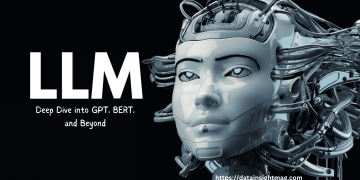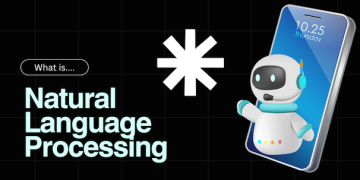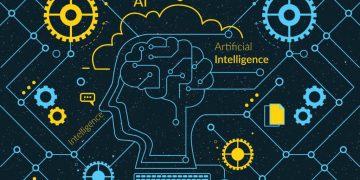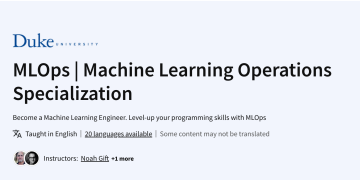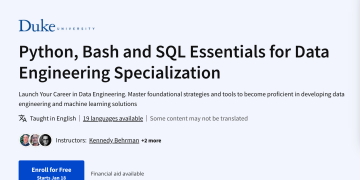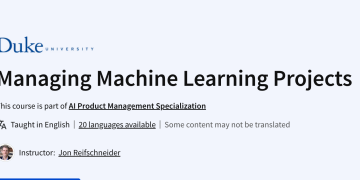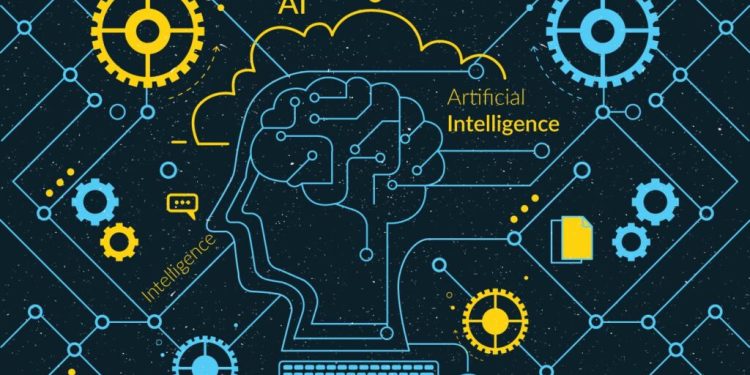The intelligence displayed by machines in par with the natural intelligence of humans is called artificial intelligence. The computer program is made to learn, think and behave according to human beings. We can tell that we’re making smart machines. Speech recognition and image recognition are the best examples. Different types of AI include reactive machines, limited memory, mind theory, and self-awareness. The system can evaluate and interpret data, learn from data and draw conclusions from AI data.
What is Artificial Intelligence?
According to John McCarthy, AI’s father, “The Science and Engineering of Intelligent Machinery, Intelligent Computer Programs in particular” is the concept of Artificial Intelligence.
AI, as the name suggests, imparts intelligence to computers such that machines function like human beings. AI is the field of computer science that emphasizes the development of intelligent machines that function, operate, and respond like human beings. AI is used in machine decision-making when considering the real-time situation. An Artificially Intelligent machine reads data in real-time, understands the market scenario, and responds accordingly.
The process of transforming a computer to a computer-controlled robot or designing software that thinks and reacts exactly the way a human being thinks is what AI is all about.
In order to use AI to create intelligent systems, it is important to understand how the brain works. It is important to research extensively how the brain thinks, learns, decides and works when solving a problem. The result thus obtained must be applied to the software in order to build smart and intelligent systems.
Knowledge Engineering is the core concept of AI research. Machines can behave, work and respond like human beings only if they have enough knowledge about business and the environment. It is therefore critical that AI has access to all information regarding the objects, categories, properties, and relationships between all cases of business users so that the machine can efficiently apply Knowledge Engineering. The task of providing machines with common sense, decision-making, reasoning and problem-solving capacity is challenging and time-consuming.
Goals of Artificial Intelligence
- To Build Intelligent & Expert Systems: Designing systems that exhibit intelligent behaviour has begun. The functions expected from these devices are learning, displaying, describing and advising users.
- To Instill Human Intelligence in Machines: Build systems and grow software that understands, thinks, learns and acts like human beings.
- Develop systems that can recognize, interpret, process and simulate human effects. These can be achieved when intelligent systems can predict their motive and emotions. Quality of interpreting human effect could help in better decision making
The main objective and a major challenge in AI is developing the computer functions that are associated with attributes such as human intelligence which includes reasoning, learning, reacting, decision making and problem-solving.
Applications of Artificial Intelligence
We’ve seen that using AI has many benefits in programs where real-time data is to be used and manipulated. AI has been used and is dominant in various fields where it is important to read, manipulate real-time data, such as:
- Natural Language Processing
In order to make the program run effectively, it is important for the machines to have the language of various users. The computer should be sensitive not only to different languages, but also to different dialects and accents. AI has been shown to be very effective in certain cases of use. - Vision Systems
Visual input is that form of information that is crucial and difficult to interpret. Hence a system integrated with Intelligence, must read, understand, interpret and comprehend the visual inputs and make decisions based on this information. - Expert Systems
Decision-making is the main feature of an intelligent computer. These machines need software that accepts the information as input, recognizes it, considers different options, and comes to a conclusion. These machines are used to provide a rationale for the situation. Such software offers explanations and guidance to consumers to make educated choices.
Some examples of these applications are
- A drone, spying camera or a spying aeroplane takes photographs, videos, which are used to understand the map of the area or figure out spatial information.
- Clinical expert systems use cameras inside the body and are often used by the doctors to diagnose the patient.
- Search and Recommendation Algorithms
- Face Detection and Recognition
- Text Editors or Autocorrect
- Social Media
- Chatbots
- Digital Assistants
- Google Maps and Ride-Hailing Applications
- Handwriting Recognition
Advantages and Disadvantages
Advantages
- The error rate is much lower compared to the human equivalent.
- Prediction and Decision-Making
- Can function equally effectively in hostile environments
- Completing risky tasks that pose challenges to man, it becomes possible to perform tasks such as exploring space without any physical harm to man.
- Robotic pets can be built to communicate with people and help alleviate depression and inactivity.
- Repetitive, monotonous and time-consuming tasks can be carried out without losing productivity.
- The precision, accuracy and speed at which AI systems run are incredible.
- Detection of fraud is made easier, particularly in card-based systems
- Organize and manage documents
- Make sound decisions as computers objectively thought without emotions
Disadvantages
- A building, rebuilding, and repairing requires skilled professional and costs a lot of money and time
- Storage is expensive
- Access and retrieval of data from the memory may not be as efficient as the human system
- Machines can be programmed to learn and get better but not as good as humans
- The scope of their activities shall be limited to the written schedule
- They could never receive creativity that humans have
- Unemployment is the biggest threat because of development in intelligent machines
- Lazy as humans are, they can become too reliant on machines and underutilize their mental capabilities
- Machines, in wrong hands, can easily lead to a destruction
Conclusion
In the 21st century, Artificial Intelligence has a lot of things to offer for business and our day to day life. Though, AI also has some difficulties and drawbacks. It is up to the business to decide whether it is necessary and profitable to invest in such technologies.
Stephen Oladeji


